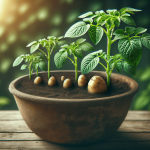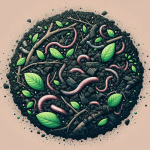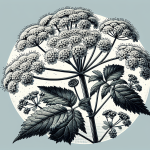This post may contain affiliate links. As an Amazon Associate, we may earn commissions from qualifying purchases.
In this article, you’ll dive into the intriguing world of tissue culture and its significant role in plant propagation. You’ll explore how this advanced technique allows for the cloning of plants from a small tissue sample, leading to faster and more efficient reproduction of plants. You’ll discover the myriad benefits it offers, such as rapid multiplication of plants, disease-free propagation, and the ability to conserve rare or endangered species. However, you’ll also learn about its limitations, including the need for specialized equipment and expertise. Finally, you’ll gain insight into how tissue culture is applied in both home gardening and commercial horticulture, offering solutions to improve plant production and maintain biodiversity. Have you ever wondered how scientists can grow entire plants from just a tiny tissue sample? You might have heard the term “tissue culture” thrown around in gardening or agriculture circles, but what exactly does it mean? And how does it benefit both home gardeners and commercial horticulturists? Today, we’ll dive into the fascinating world of tissue culture and explore its pivotal role in plant propagation.
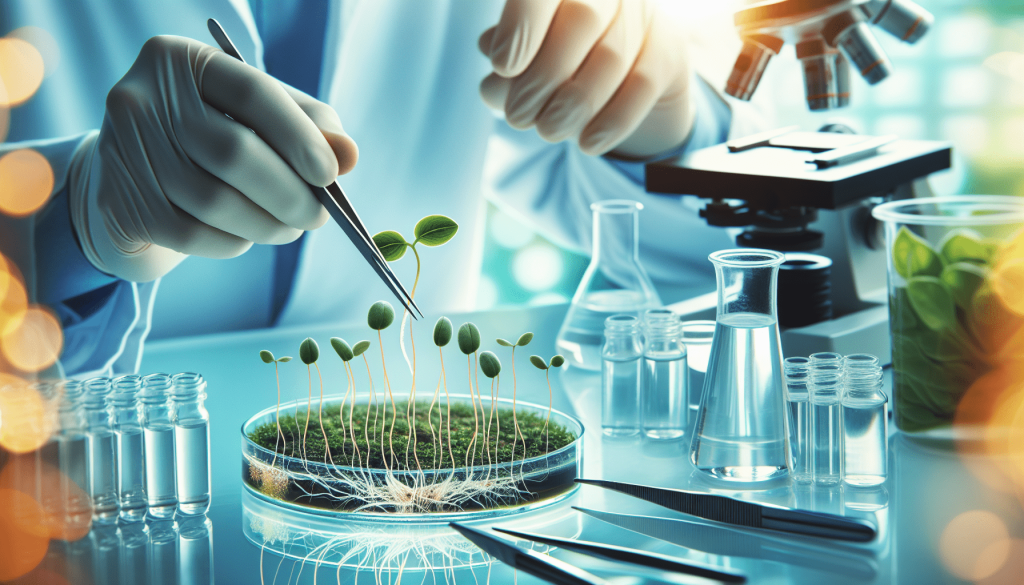
What is Tissue Culture?
Tissue culture, also known as micropropagation, is a collection of techniques used to grow plants from very small pieces of plant tissue or cells in a controlled, sterile environment. This method allows you to produce large numbers of plants from a single tissue sample, making it an incredibly efficient and often economical way to multiply plants.
How Does It Work?
Tissue culture involves several steps:
- Selection of Explant: This is the small piece of plant tissue that will be used for cultivation. It can be taken from various plant parts such as leaves, stems, roots, or even seeds.
- Sterilization: The explant needs to be sterilized to eliminate any contaminants that can affect the tissue culture process.
- Initiation: The sterilized explant is placed in a nutrient-rich culture medium in a controlled environment.
- Multiplication: The plant tissue starts to grow and divide, forming multiple new tissues, which can then be separated and placed in new media to continue growing.
- Rooting and Hardening: Eventually, the new plants are encouraged to develop roots. Once the plants have established a root system, they are transferred to soil and gradually acclimated to outside conditions.
Why is Tissue Culture Important?
From large agricultural operations to small home gardens, tissue culture provides a reliable and efficient method for plant propagation. But why is this particularly advantageous? Let’s explore the major benefits.
Benefits of Tissue Culture in Plant Propagation
High Multiplication Rate
One of the most significant advantages of tissue culture is the ability to produce a large number of plants in a relatively short period. This is particularly beneficial for commercial horticulturists who need to propagate plants on a large scale.
Disease-Free Plants
Because tissue culture takes place in sterile conditions, the resulting plants are typically free of diseases and pests. This ensures a higher success rate and healthier plants.
Genetic Uniformity
For commercial growers, having genetically uniform plants is often desirable for maintaining consistency in crop quality and performance. Tissue culture ensures that each propagated plant is an exact genetic clone of the original.
Preservation of Rare or Endangered Species
Tissue culture can be used to propagate rare or endangered plant species that might not reproduce as efficiently through traditional methods. This can play a crucial role in conservation efforts.
Space Efficiency
Since tissue culture requires only small tissue samples, you can propagate a large number of plants in a much smaller space compared to traditional methods. This can be particularly useful in urban environments or areas with limited growing space.
Limitations of Tissue Culture
Despite its many advantages, tissue culture is not without its limitations. Understanding these challenges can help you decide whether this method is suitable for your needs.
Cost
Establishing a tissue culture lab can be expensive due to the need for specialized equipment and sterile conditions. This may not be a feasible investment for small-scale farmers or home gardeners.
Technical Expertise
Tissue culture requires a level of technical expertise and knowledge that might not be accessible to everyone. It involves precise procedures and an understanding of plant biology, making it more suitable for experienced growers or those willing to invest time in learning.
Risk of Contamination
Even with stringent sterilization procedures, the risk of contamination always exists. Contaminants like bacteria and fungi can easily ruin an entire batch of plant culture.
Limited Genetic Diversity
While genetic uniformity can be an advantage, it can also be a limitation. A lack of genetic diversity can make plants more susceptible to diseases or changes in environmental conditions.
Applications in Home Gardening
Though tissue culture might seem like a high-tech procedure, its applications are not limited to commercial agriculture. Home gardeners can also benefit from this sophisticated method.
Propagating Favorite Plants
Do you have a favorite plant that you wish you had more of? Tissue culture allows you to create multiple identical copies of that plant, ensuring you never run out of your favorites.
Disease-Free Gardening
If you’re dealing with recurring plant diseases, tissue culture can provide a fresh start with disease-free plants, ensuring your garden thrives.
Conservation at Home
Want to do your part in conserving rare plant species? Tissue culture can help you propagate and grow rare or endangered plants right in your backyard.
Space Savings
Living in an apartment or have limited gardening space? Tissue culture allows you to propagate multiple plants in a confined area, making it perfect for urban gardeners.
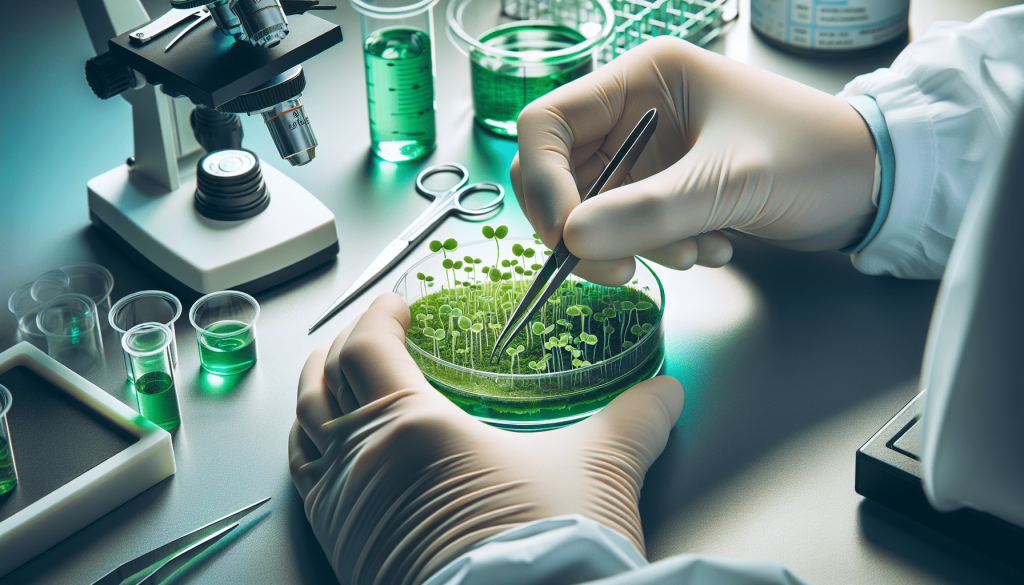
Applications in Commercial Horticulture
For commercial horticulturists, the benefits of tissue culture extend far beyond just space savings.
Consistent Crop Quality
Uniformity in plants translates to consistent quality in crops, which is crucial for commercial success. Tissue culture ensures that your crops perform reliably year after year.
Faster Crop Production
Time is money, especially in commercial agriculture. Tissue culture allows for rapid multiplication of plants, speeding up the production cycle and potentially increasing profits.
Disease Management
Managing plant diseases on a large scale can be challenging and costly. Tissue culture can provide disease-free plants, reducing the need for chemical treatments and increasing overall crop health.
Exotic Plant Production
Commercial growers can tap into niche markets by using tissue culture to propagate exotic or hard-to-grow plants, opening up new revenue streams.
Step-by-Step Guide: How to Perform Tissue Culture
If you’re intrigued and want to try your hand at it, here’s a simplified step-by-step guide to tissue culture.
1. Gather Your Materials
- Plant tissue (explant)
- Sterilizing agents (alcohol, bleach, etc.)
- Culture media
- Sterile containers
- Laminar flow hood
- Scalpel and tweezers
- Growth hormones (auxins, cytokinins)
- Controlled environment (growth chamber)
2. Prepare the Explant
- Select a healthy plant part for the explant.
- Wash the explant and sterilize it using a mixture of sterilizing agents.
3. Inoculate the Explant
- In a sterile environment, place the explant on a nutrient culture medium.
- Seal the container to prevent contamination.
4. Incubate
- Transfer the containers to a growth chamber with controlled light, temperature, and humidity.
5. Subculturing
- Once the explants start growing, you’ll need to transfer them to fresh media to continue their growth.
6. Rooting and Acclimatization
- Transfer the plants to a rooting medium to develop roots.
- Gradually acclimatize them to outdoor conditions before planting in soil.
Conclusion
Tissue culture is a fascinating and highly effective method for plant propagation, offering numerous benefits but also presenting some challenges. Whether you’re an enthusiastic home gardener or a seasoned commercial horticulturist, understanding the nuances of tissue culture can help you make informed decisions about incorporating it into your gardening repertoire. By leveraging the power of tissue culture, you can achieve higher multiplication rates, disease-free plants, and even contribute to the conservation of rare plant species. Despite its limitations, tissue culture remains a cornerstone of modern horticulture, promising a greener and more efficient future for plant propagation.
We hope this detailed guide has provided you with valuable insights into the world of tissue culture, and we encourage you to experiment with this innovative technique in your own gardening endeavors. Happy growing!


